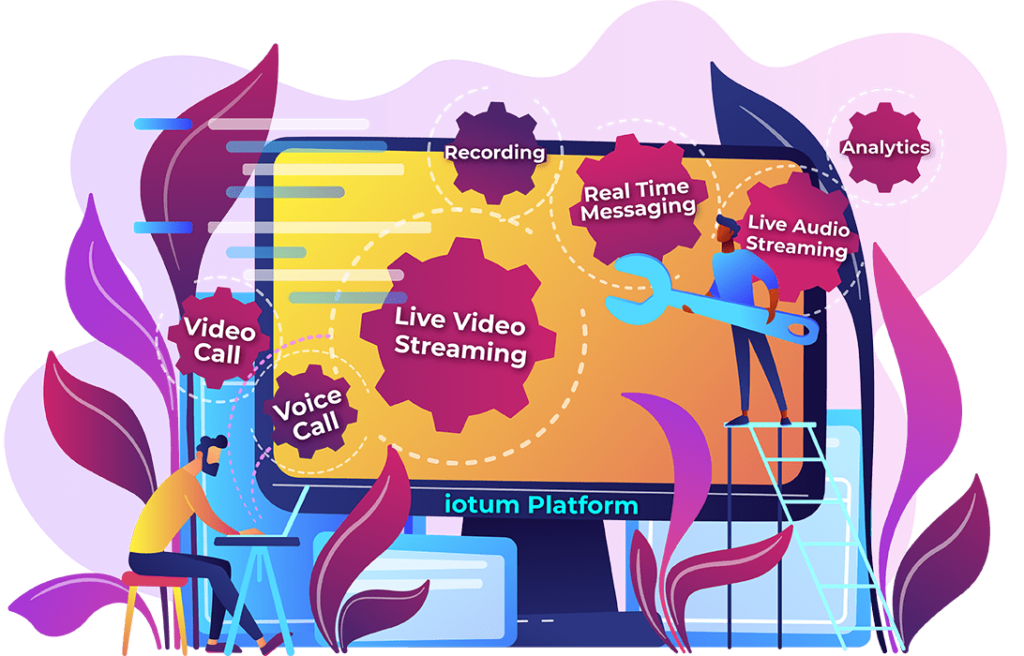 So you want to know how to get coaching clients fast. You’ve got the credentials. You’re educated, smart, passionate, and know your area inside out. You’ve got everything in place and your business is launched online – maybe not entirely, but you have an online presence and you’re eager to get your business going to attract the clients of your dreams.
So you want to know how to get coaching clients fast. You’ve got the credentials. You’re educated, smart, passionate, and know your area inside out. You’ve got everything in place and your business is launched online – maybe not entirely, but you have an online presence and you’re eager to get your business going to attract the clients of your dreams.
Client acquisition is critical to the health of your online coaching business. Your face and presence are the foundational building blocks and how you’re able to present yourself in an online environment will determine how fast you’re able to get clients. Online is where you will be creating video, social media and written content, plus doing the bulk of your one-on-ones and group sessions using video conferencing.
In this post, you’ll learn:
- The difference between a $1 and $1000 problem
- Why competition isn’t a bad thing – it’s actually great!
- How to fine-tune your offer so it’s more compelling
- The power of podcasts
- Organic vs. paid marketing
- The membership site business model
- …and how to get online coaching clients!
There are many ways you can speed up and improve the process of getting your first coaching clients or attracting more of the clients you want – especially in an online world where digital tools are aplenty! Here are a few questions to ask yourself about where your business is at today and where you want it to go tomorrow:
What Problem Are You Solving For Your Clients?
 The most important thing you can do for your business, your brand, and amassing clients is to determine what it is you’re solving or providing for your client. Trying to be a coach who “does it all” won’t stand you in good stead when you’re appealing to prospects. Your area of expertise allows you to place all your effort and focus into one niche so you can provide the kind of coaching people are willing to pay for. It’s that specific area of expertise that will be visible in all your coaching and will stick out in your client’s top-of-mind-awareness in the consideration phase.
The most important thing you can do for your business, your brand, and amassing clients is to determine what it is you’re solving or providing for your client. Trying to be a coach who “does it all” won’t stand you in good stead when you’re appealing to prospects. Your area of expertise allows you to place all your effort and focus into one niche so you can provide the kind of coaching people are willing to pay for. It’s that specific area of expertise that will be visible in all your coaching and will stick out in your client’s top-of-mind-awareness in the consideration phase.
People pay for results, not coaches. If you want a lucrative business that gets you clients, your ability to problem solve is what will get you noticed. Think of it like you’re tackling a $1000 problem vs a $1 problem.
If you’re looking to get ahead as a wealth management, money consciousness or financial coach, you can easily coach people about how to save money. You can solve a $1 problem by creating a program that coaches people on the mechanics of how to look at their money spending habits, budgeting, and saving habits. But if you want it up the ante, think about how you can solve your ideal client’s bigger, more specific problems, like how to generate investments and leads while getting a start up business off the ground; or creating a very personalized program that helps develop a spending plan and budgeting system with the end goal being complete financial freedom or saving enough money for a downpayment on a house.
Knowing what problem you are solving for your client will maximize your knowledge and bring in the exact people you want to work with – for the kind of money you want to earn!
Who Is Your Target Audience?
So you’ve decided on the type of coaching you want to dive deep into. If you know the problem you want to solve, you probably already have an idea of your target audience. How to find coaching clients now depends on how well you’re able to identify, draw and or attract that target audience. It doesn’t have to be daunting and doesn’t have to feel like a huge, research-oriented process, although some research and digging will come in handy.
Get the ball rolling by identifying your biggest competitors. Search online, stake out social media, join Facebook groups, forums, networking events and more to get a better handle on what’s already being done. After all, your competition has already put in the time and spent the money to get to where they are. They’ve attracted the proven buyer behavior in audiences, so why not learn from what they’re doing right?
Who Are Your Competitors And Influencers Already Doing What You Want To Do?
One thing to make clear is that you aren’t “borrowing” an influencer’s ideas or stealing the competition’s trade secrets. Competitor analysis (or comparing competitors) is about understanding their strengths and weaknesses and looking for patterns. You want to analyze what is working for them or not working; look for areas of improvement and where you can put your own spin on things. Try getting started with these four steps:
- Pinpoint
Every market has competition. Pinpoint who/what your competition is because by following and acknowledging them, you can see how they are getting results. - Analyze
Delve deep into your competitor’s online presence, messaging, the type of content they’re publishing. Knowing their content will get you on track to creating your own content. Eventually, you’ll be able to get a handle on it and understand their formula for success so you can figure out ways to surpass and excel. - Assess
To put your own spin on things, first you need to know what you’re working with. Get intimate with their social channels, ad campaigns, email lists and newsletters, their product, offers, strategic goals – everything and anything you can get your hands or eyeballs on!
 And in case it wasn’t obvious before, here it is again: Competition is good. It’s proof that the audience is out there with a problem. Your competition has already spent the money and put in the time and effort, so you know something is working. Now it’s just up to you to make your coaching product and service THE coaching product and service they want.
And in case it wasn’t obvious before, here it is again: Competition is good. It’s proof that the audience is out there with a problem. Your competition has already spent the money and put in the time and effort, so you know something is working. Now it’s just up to you to make your coaching product and service THE coaching product and service they want.
(alt-tag: Young woman seated at desk facing laptop chatting to the open screen, at home in bright and white room)
Is Your Offer Compelling?
The beauty of a coaching business is that there is no glass ceiling. Rapidly scaling your business can be done with digital tools like video conferencing and email automation alongside updating your compelling offer to clients. But how do you know your offer is compelling?
When you’re coming up with an offer, keep these three ideas in mind:
- What am I charging for my services?
It’s easy to get stuck humming and hawing over prices and what to charge. Make sure you’ve sat with your offering and taken a good hard look at how you can release it to the world. Consider breaking down your 1:1 time to offer more personalized programs, or a price list of packages that speak to certain demographics. This will give you a better idea of how you can charge more without sacrificing value. - Can I add more bonuses and free stuff to make it sell?
Throwing in a few freebies shows your captive audience you know what you’re talking about. Plus, it warms them up to your smaller sells (ebooks, hosting workshops, webinars, etc.), eventually leading them to your big sell (a retreat, mastermind, personalized 1:1 package) - Will adding direct access to myself position my offering as more valuable?
Depending what point you are at with your business, determine if you can offer your 1:1 video conferencing time with clients. In the beginning, this will be more available to you but as you gain speed and traction, you’ll notice that your 1:1 time becomes exclusive. This is very valuable for clients down the line and you can charge a premium once you’ve built the authority and you have the platform.
When coming up with an offer, the overall idea here is to provide value above anything else. Your online coaching business will blossom and grow to attract more clients when you can scale your offer and customize it according to specific clients. Furthermore, adding a sense of urgency or limited-time availability works to create a more compelling offer too.
How Are You Building Your Authority?
Without authority, your business is likely to not attract who it is you want to attract. It’s important that people recognize you as an expert, as someone who has done the work, knows the work and has people in their corner.
A great way to start building authority if you want to get coaching clients fast is by starting your own podcast or by being a guest on other podcasts. Learn how to express yourself and speak gracefully on your topic. Before recording, know your message, your story and have a few points ready to talk about.
Pro-tip: While you’re recording your audio, set up your video conferencing software to live stream or record what’s going on behind the scenes. This generates extra pieces of valuable content that can be used across social media and more to build your brand and get you seen across different channels.
What Is Your Sales Process?
This is where the magic of your presence makes a difference in sealing the deal. The sales process shouldn’t be limited. Instead, you can bring more value to your customers and increase sales by nurturing them towards your bigger packages.
Start by basing your sales process on the price point of your coaching programs. Consider that a person probably won’t buy a pricey package at $2,000 without feeling like they’re making a return on investment. A discovery call, or more in-depth video presentation that shows your essence and presence will help woo them to want to swipe their card. Conversely, if your coaching service is only $90 to $300 dollars, they might already feel inclined enough to make the purchase.
Once you can start to see the beginning part of the consumer journey and how to bring them over to your coaching, the next step to finding coaching clients is establishing a sales funnel – a good one!
Do You Have A Sales Funnel?
In other words, a sales funnel functions as your marketing strategy. It’s how you’re able to turn a potential customer into a client to maximize your revenue. Depending who you’re trying to attract, there are different approaches. You can try marketing your services through regular webinars or if you have a lot of moving parts, you might use an application funnel which requires prospects to have to apply to work with you.
What’s Your Marketing Mix?
For any business to flourish more traffic to your website or social media will get you there. Afterall, traffic means potential sales, or at the very least, more exposure.
There are two types of traffic to attract visitors:
- Organic marketing is when you haven’t paid for search results or advertising.
It’s best used to develop your brand’s voice and actually have authentic interactions with customers. Organic marketing educates customers, drives authority in your niche or industry, uses inbound/outbound linking strategies and ultimately builds a long lasting brand. This is when visitors find your website organically. - Paid marketing is when visitors come to your website from an ad elsewhere that was paid for.
This gives businesses a fast track to targeting, reaching, engaging and converting their audiences quickly. You don’t have to wait around hoping someone finds your blog or content. Instead, you pay to push your content which is usually ads. It’s much more of a hard sell and focused on driving specific calls to action, like making a purchase or securing a spot in a webinar. Paid marketing is easier to track and allows you to test different campaigns to see which ones bring in the best results.
Ideally, your marketing mix should have a balance of both approaches. Relying only on one isn’t versatile and may not be enough to get the competitive edge you need to stay ahead. Paid traffic guarantees to scale your business but if your offering isn’t doing anything organically, paid ads cannot help.
Do You Have A Website? Or Membership Site?
If you’re wondering what a membership site is, two words: recurring revenue. It’s different from a stand-alone online course, but has plenty of e-learning features and benefits. It’s a site where your customers have access to your offerings, using a subscription-based business model that doesn’t have an end date. Online courses on the other hand are usually finished products sold for a one-time price and have a clear starting and ending point.
The biggest differentiator between the two is that membership-sites offer recurring income. New content has to be continual – and can come in the form of new courses, videos, one-on-one or group video conferencing sessions and private teleseminars – really, it’s about offering anything extra that can justify paying for content on a regular basis.
Depending where you are in your online coaching business, a membership site might be the next level you need to iunlock. This step is typically reserved for coaches who have a solid following, and several online courses and content, but if you’re in the beginning stages, this is definitely a goal to build towards.
Here are the 3 Core Membership Business Models:
The Fix Model
A membership site that adopts the “fix model” focuses on diving deep and solving one clear problem. A smaller fix could look like a program designed to help you be a better writer or show you how to grow orchids. A bigger more long-term fix could look like a program that transforms you and shows you how to leave your 9-5 to start your own business. Keep in mind that these programs can take shape through varying lengths of time such as a three month program up to a year-long program.
The Motivate Model
When facing a challenge, there is strength in numbers and better accountability within a community. For those seeking to lose weight, get more advanced in their yoga practice, learn how to weight train or looking for support with their blossoming coaching business, this model offers paid access to others going through the same. It’s an online community that brings people together to share their accomplishments and struggles, under your guidance and expert coaching. This could look like weekly or monthly video conferences and a solid Facebook group.
The Hangout Model
 This is geared for people who might appear to have a problem on the surface but who are really looking to find others who share the same passion. At their core, they are hobbyists who want to connect with others who speak their language This membership model works especially well for very niche causes and passions but can open up to unify people more broadly.
This is geared for people who might appear to have a problem on the surface but who are really looking to find others who share the same passion. At their core, they are hobbyists who want to connect with others who speak their language This membership model works especially well for very niche causes and passions but can open up to unify people more broadly.
At the end of the day, your presence as a coach matters most. How you show up whether in a video conference with 1 or 300 people or how you show up in your community or across the touchpoints on your website will determine the kind of clients you keep and attract. What are you bringing to the table that makes you different? How can you physically and emotionally be there for your client in a way that makes them feel seen and heard?
Here are a few more ways to build authority, gain credibility and increase exposure as you ramp up and scale your business:
- Facebook Groups
Bring the community together in a safe and inclusive online environment that stands as a platform for people to connect and share. This is a great way to increase your following and open the conversation between like-minded people. You can drop mention of your product launches, promotions, and contests, or keep the conversation flowing by asking daily questions, hosting weekly Q&As, or starting a book club. - Automatic Email System
Generate leads by creating a prompt that comes up when someone lands on your page and has to enter their email. This will create a list for you to send out an informative newsletter, or interesting content about your product or updates in your industry. Keep it between 200-300 words and remember to tell a story or provide a lesson. Stay relevant and have a call to action in every email. - Blogging
By being a guest blogger for another coach or thought leader in your field, you are gaining authority and amassing valuable backlinks. In contrast, by writing your own SEO-optimized blog posts, you are creating content that lives on your own site to generate traffic. - YouTube Live Streaming
Next time you have something interesting to share or speak about, live stream it using video conferencing software to engage with your audience. Host a live webinar and record it to create more content later. You can splice your favorite parts to create Instagram stories or create clips to post in your Facebook Group.
There are so many ways an online coach can get dream clients. With a little ingenuity and a lot of passion behind your work, you can watch your business sparkle and shine as it grows in size to gain more reach. While you incorporate these methods of getting more clients, continue to gain their trust with video conferencing software that supports the connection you have with them.
Let FreeConference.com show you how to get clients fast. By giving current and prospective clients direct access to you and your much needed coaching skills you’ll bear witness to a burgeoning business you can be proud of. With simple-to-use video conferencing and conference calling technology that doesn’t put a strain on your wallet, you can enjoy the perks of starting, growing and scaling your online presence to attract high-paying clients that want what you’re offering.
FreeConference.com gives you the peace of mind of a solid video and audio connection from anywhere at any time, loaded with FREE features like screen sharing and document sharing.


